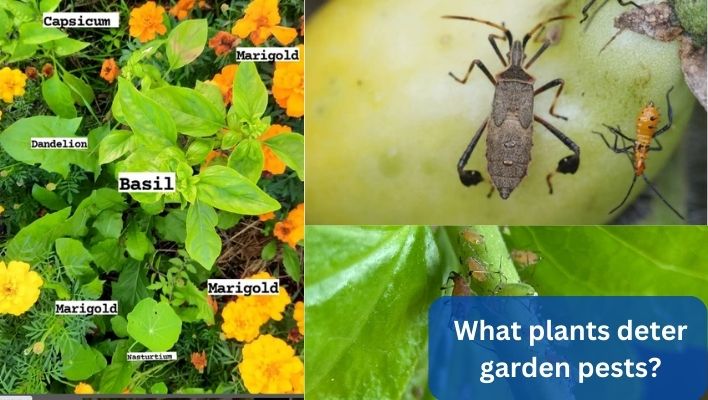Are you tired of seeing your garden plants getting destroyed by pesky insects and pests? Well, you’re not alone. Gardening can be a rewarding hobby, but it can also be frustrating when your hard work is ruined by unwanted visitors. The good news is that there are plants that can help you deter these pests without resorting to harsh chemicals.
Not only are these plants effective in deterring pests, but they also add beauty and diversity to your garden.
In this blog post, we’re going to dive into the world of pest-repellent plants and discover which ones can help keep your garden healthy and thriving. From marigolds to garlic, we’ll explore the natural properties of various plants that repel specific types of pests.
So, if you want to learn how to protect your garden from pests without harming the environment, keep reading.
What are garden pests?
Garden pests are insects or other organisms that can cause damage or harm to plants, which can negatively affect their growth, health, and yield. Some common types of garden pests include aphids, slugs, snails, spider mites, whiteflies, caterpillars, beetles, and many more.
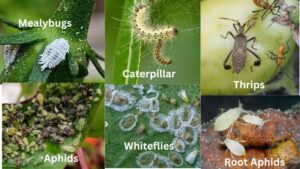
These pests can cause various types of damage to plants, such as eating leaves, stems, or roots, transmitting diseases, and sucking out plant juices. Some pests can even attract other pests or predators to your garden, which can cause further damage. These pests can have negative effects on your plants by:
- Feeding on plant tissues can weaken or kill the plants.
- Spreading diseases that can infect the plants and reduce their productivity.
- Disrupting the growth and development of the plants.
Here are some common garden pests that plants can deter:
- Aphids: These tiny insects suck the sap from the leaves and stems of plants, causing them to wilt and die. Plants like marigolds, chives, and garlic can deter aphids.
- Caterpillars: These larvae of moths and butterflies can eat the leaves and flowers of plants. Plants like dill, parsley, and fennel can repel caterpillars.
- Slugs and snails: These slimy creatures can eat large holes in leaves and fruits, and they can also spread diseases. Plants like lavender, sage, and thyme can deter slugs and snails.
- Beetles: These insects can chew through the leaves and flowers of plants. Plants like basil, catnip, and tansy can deter beetles.
- Rodents: These pests can eat the roots and fruits of plants, causing extensive damage. Plants like peppermint, garlic, and onions can repel rodents.
By incorporating pest-repellent plants into your garden, you can deter these pests and protect your plants from damage.
Plants that Deter Common Garden Pests
Plants have developed various natural defenses against pests, and many gardeners use these plant properties to protect their crops. Here are some plants that can help deter common garden pests:

- Marigolds: repel aphids, whiteflies, and mosquitoes
- Garlic: repels snails, slugs, and aphids
- Chives: repel aphids, spider mites, and Japanese beetles
- Petunias: repel aphids, tomato hornworms, and squash bugs
- Basil: repels flies, mosquitoes, and spider mites
- Nasturtiums: repel aphids, squash bugs, and cucumber beetles
- Lavender: repels moths, fleas, and mosquitoes
- Catnip: repels ants, cockroaches, and mosquitoes
- Peppermint: repels ants, fleas, and mosquitoes
- Spearmint: repels ants, fleas, and cabbage moths
- Chrysanthemums: repel ants, roaches, and spider mites
- Petunias: repel aphids, tomato hornworms, and asparagus beetles
- Fennel: repels aphids, slugs, and snails
- Thyme: repels cabbage loopers, cabbage maggots, and corn earworms
- Sage: repels cabbage loopers and carrot flies
- Dill: repels aphids, spider mites, and squash bugs
- Rosemary: repels carrot flies and mosquitoes
- Oregano: repels cucumber beetles and spider mites
- Sunflowers: repel aphids, whiteflies, and beetles
- Alliums (onions, leeks, etc.): repel carrot flies, aphids, and cabbage worms
- Mint: repels ants, flies, and cabbage moths
- Geraniums: repel Japanese beetles and cabbage worms
- Lemon balm: repels mosquitoes and gnats
These plants work as natural pest repellents by emitting compounds or scents that pests find unpleasant or confusing. Some plants also attract beneficial insects, such as ladybugs or lacewings, which prey on garden pests. Also, Some plants have physical properties that can deter pests, such as prickly leaves or a bitter taste.
- Protects camellias, roses, lettuce, tomatoes, and many other fruits and flowers
- Apply on vegetables, fruits, flowers, shrubs, trees, and other outdoor plants and surfaces
- Apply early or at first signs of insect damage
To plant and care for pest-repellent plants, you should choose a sunny location with well-draining soil. Follow the planting instructions for each specific plant, and be sure to water and fertilize them regularly. You can also use these plants as borders or interplant them with other vegetables or flowers in your garden.
Remember to also monitor your plants regularly for signs of pests, and take action immediately if you notice an infestation. By using pest-repellent plants and practicing proper gardening techniques, you can keep your garden healthy and thriving without relying on harmful chemicals.
How to incorporate pest-repellent plants in your garden
Incorporating pest-repellent plants in your garden is a great way to protect your crops from pests naturally. Here are some ways to integrate pest-repellent plants in your garden:
- Companion Planting: Companion planting involves planting different plants together that complement each other’s growth and properties. For example, planting marigolds alongside tomatoes can help deter aphids and whiteflies, while also improving the soil quality for the tomatoes.
- Intercropping: Intercropping involves planting different crops together on the same plot of land. This method can help reduce pest damage by confusing pests or making it harder for them to find their preferred plants. For example, planting onions or garlic with carrots can help deter carrot flies and improve the carrots’ growth.
- Border Planting: Border planting involves planting pest-repellent plants around the perimeter of your garden. This can help create a natural barrier that deters pests from entering your garden. For example, planting lavender or chives around the edge of your garden can help repel mosquitoes and aphids.
- Interplanting: Interplanting involves planting pest-repellent plants alongside your other crops. This can help deter pests from attacking your crops and can also attract beneficial insects. For example, planting basil or oregano alongside your tomato plants can help repel pests like tomato hornworms and attract bees to pollinate the tomato flowers.
- Container Planting: If you have limited space, you can still incorporate pest-repellent plants in your garden by planting them in containers. This can also make it easier to move the plants around if necessary. For example, planting mint or petunias in a container on your balcony can help repel mosquitoes and aphids.
When incorporating pest-repellent plants in your garden, it’s important to choose plants that are appropriate for your climate and soil conditions.
You should also pay attention to the plant’s growth habits and spacing requirements to ensure that they have enough room to grow and thrive. By using a combination of these methods, you can create a natural and effective pest management strategy for your garden.
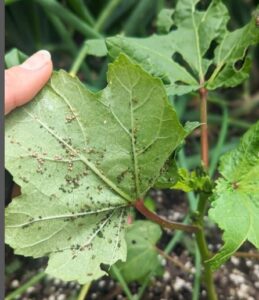
How to design and plant a pest-repellent garden Step-by-step
Designing and planting a pest-repellent garden can be a fun and effective way to keep pests away from your plants. Here are some step-by-step instructions on how to design and plant a pest-repellent garden:
- Choose the location: The first step in designing a pest-repellent garden is to choose the location. Choose a spot that gets plenty of sunlight and has well-drained soil.
- Plan your garden layout: Once you’ve chosen the location, plan your garden layout. Sketch out a design that includes the different plants you want to grow and where you will plant them. Consider using companion planting or intercropping techniques to maximize your garden’s pest-repelling potential.
- Select your plants: Choose plants that are known to repel pests. Consider plants like marigolds, lavender, mint, chives, onions, garlic, and rosemary. These plants are natural pest repellents and can help keep pests away from your garden.
- Prepare the soil: Before planting, prepare the soil by removing any weeds and adding compost or other organic matter to improve the soil quality.
- Plant your pest-repellent plants: Once the soil is prepared, it’s time to plant your pest-repellent plants. Follow the planting instructions for each plant, making sure to space them appropriately and give them enough room to grow.
- Add mulch: Adding mulch around your plants can help conserve moisture and suppress weeds, which can also help deter pests.
- Water and maintain your garden: Water your plants regularly and monitor them for any signs of pests or disease. Remove any pests you see by hand or use natural pest control methods like neem oil or insecticidal soap.
- Monitor for pests: Regularly check your plants for signs of pests, and take action immediately if you notice an infestation. You can also use companion planting or intercropping to prevent pests from attacking your crops.
By incorporating pest-repellent plants in your garden, you can protect your crops naturally and reduce your reliance on harmful chemicals. With proper planning and care, your pest-repellent garden can thrive and provide you with healthy and delicious produce.
- 8oz Concentrate Makes 1 Gallon Repellent
- Naturally Safe for People and Pets* - Smells Good Too!
- Active Ingredient: Pure Origin Peppermint Essential Oil - See Our Story Below!
Tips for Using Plants to Deter Garden Pests
Using plants to deter garden pests is a natural and effective way to protect your plants without using harmful chemicals. Here are some tips for using plants to deter garden pests:
- Choose the right plants: When choosing plants to deter garden pests, consider the pests you are trying to repel and choose plants that are known to be effective against those pests. For example, planting marigolds can help deter aphids and whiteflies, while planting garlic can help deter slugs and snails.
- Use companion planting: Companion planting involves planting different plants together that benefit each other. When using companion planting to deter garden pests, choose plants that work well together and have complementary pest-repelling properties. For example, planting basil with tomatoes can help deter pests like tomato hornworms and improve the tomatoes’ flavor.
- Intercrop your plants: Intercropping involves planting different crops together in the same plot of land. This method can help reduce pest damage by confusing pests or making it harder for them to find their preferred plants. For example, planting onions or garlic with carrots can help deter carrot flies and improve the carrots’ growth.
- Plant at the right time: Planting your pest-repellent plants at the right time can help maximize their effectiveness. For example, planting marigolds in early spring can help repel pests that emerge early in the growing season.
- Keep your plants healthy: Keeping your plants healthy and well-maintained can help them better resist pest infestations. Make sure to water your plants regularly and fertilize them as needed. Remove any diseased or damaged leaves to prevent pests from taking hold.
- Rotate your crops: Rotating your crops each season can help prevent pests from building up in the soil. Consider planting different crops in different areas of your garden each year to break the pest cycle.
By using these tips for using plants to deter garden pests, you can create a natural and effective pest management strategy for your garden.
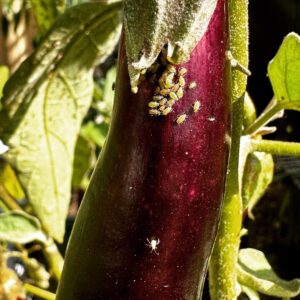
Maintenance tips for ensuring continued pest deterrence:
- Monitor your plants regularly: Regular monitoring can help you catch pest infestations early and prevent them from becoming established. Check your plants for signs of pest damage, such as chewed leaves or stunted growth.
- Remove any infested plants: If you do find signs of pest infestation, remove the affected plants immediately to prevent the pests from spreading.
- Practice good garden hygiene: Keep your garden clean and tidy by removing plant debris and fallen leaves, which can harbor pests and diseases.
- Rotate your crops: Rotating your crops each season can help prevent pests from building up in the soil. Consider planting different crops in different areas of your garden each year to break the pest cycle.
Common mistakes to avoid when using plants as pest repellents:
- Not planting enough: To be effective, pest-repellent plants must be planted in sufficient quantities. Be sure to plant enough of each type of plant to create a barrier against pests.
- Planting the wrong plants: Not all plants are effective at repelling pests, so be sure to choose plants that are known to be effective against the pests you are trying to repel.
- Planting too late: To maximize their effectiveness, pest-repellent plants should be planted early in the growing season. Planting too late may not provide enough time for the plants to mature and become effective.
By following these proper planting techniques, and maintenance tips, and avoiding common mistakes, you can ensure the continued pest deterrence of your garden.
Benefits of using plants to deter pests instead of chemical pesticides
There are several benefits to using plants to deter pests instead of chemical pesticides:
- Safer for the environment: Chemical pesticides can be harmful to the environment and non-target organisms. By using pest-repellent plants, you can reduce your reliance on synthetic chemicals and create a more eco-friendly garden.
- Healthier for you and your family: Exposure to chemical pesticides can pose a health risk to you and your family. Using natural pest repellents like plants can help reduce your exposure to harmful chemicals and promote a healthier living environment.
- Cost-effective: Chemical pesticides can be expensive, and their repeated use can quickly add up. Planting pest-repellent plants is a one-time cost that can provide long-term benefits and savings.
- Creates a balanced ecosystem: By using pest-repellent plants, you are creating a balanced ecosystem in your garden. Instead of simply killing pests, you are promoting a healthy and diverse ecosystem that can help control pests naturally.
- Improves soil health: Many pest-repellent plants have deep root systems that can help improve soil health by aerating the soil and adding organic matter. This can lead to healthier plants and improved yields over time.
Using plants to deter pests instead of chemical pesticides can be a safer, healthier, and more cost-effective way to maintain a healthy and productive garden.
- 【The PUREST Neem Oil on the Market!】- Plantonix Neem Bliss is freshly made from the fruit kernels of the neem plant, without the use of any heat or additives! The cold press process retains essential nutrients, ensuring you always get the best results for your garden, soil, or irrigation system!
- 【Easy to Use for Many Applications!】- To use for plants, simply mix 1.5 teaspoons of Plantonix Neem Bliss per 1 quart of water. Then, add half a teaspoon of dish soap per 1 quart of water. Spray the diluted Neem Bliss on all leaf surfaces, and then reuse every 2-4 weeks for best results!
- 【Highly Concentrated and Soluble!】- All Neem Bliss is heavily concentrated and made with zero additives, making it easy to reuse on farms, lawns, and indoor and outdoor gardens! The main active ingredient in Neem Bliss is azadirachtin, allowing it to be highly soluble and ideal for topical applications.
Other Natural Pest Control Methods
While using pest-repellent plants is an effective way to control garden pests naturally, there are other natural pest control methods you can use in your garden. Here are some examples:
- Beneficial insects: Attracting beneficial insects like ladybugs, lacewings, and praying mantises to your garden can help control pests like aphids and caterpillars. You can plant flowers and herbs like dill, fennel, and marigolds to attract these helpful insects.
- Homemade pest sprays: You can make your pest sprays using natural ingredients like garlic, hot pepper, and soap. These sprays can help control pests like aphids and spider mites. Be sure to test the spray on a small area of your plants first to ensure it doesn’t damage them.
- Row covers: Covering your plants with row covers can help protect them from pests like cabbage worms and carrot flies. Row covers are made of lightweight fabric that allows air and light to pass through while keeping pests out.
- Crop rotation: Rotating your crops each year can help prevent the build-up of pest populations in your garden. This method involves planting different crops in different areas of your garden each year to help break the pest life cycle.
- Handpicking: Removing pests by hand can be an effective way to control their populations. This method is particularly useful for larger pests like slugs and snails. Be sure to check your plants regularly and remove any pests you find.
Using a combination of these natural pest control methods, along with pest-repellent plants, can help you maintain a healthy and productive garden without the use of synthetic chemicals.
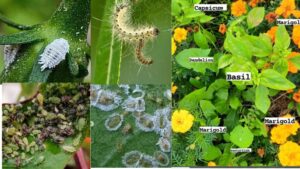
What plants deter garden pests FAQ
How do I know which plants to choose for my garden?
When selecting plants for your garden, consider the specific pests you’re trying to deter. For example, if you’re dealing with aphids, you might choose plants like chives, garlic, or catnip. If you’re dealing with slugs, you might choose plants like mint, thyme, or sage. Research the specific pests in your area and choose plants that are effective at repelling them.
How long does it take for these plants to start working as pest repellents?
The effectiveness of pest-repellent plants can vary depending on the type of plant and the pest you’re trying to deter. Some plants, like marigolds, can start to work as soon as they’re planted, while others may take a few weeks or even a few months to become fully effective. It’s important to be patient and give the plants time to establish themselves and start working as pest repellents.
Will these plants harm beneficial insects like bees and butterflies?
Most pest-repellent plants are not harmful to beneficial insects like bees and butterflies. In fact, many of these plants also attract beneficial insects to your garden. However, it’s important to be cautious when using any type of pest control method in your garden. Avoid using synthetic chemicals and be sure to research the specific plants you’re using to ensure they’re safe for beneficial insects.
Can these plants completely eliminate pests from my garden?
While pest-repellent plants can be effective at reducing pest populations in your garden, they’re unlikely to completely eliminate pests. It’s important to use a combination of pest control methods, including pest-repellent plants, to keep pest populations under control. Additionally, it’s important to be proactive in your pest control efforts by regularly monitoring your garden for pests and taking action as soon as you notice a problem.
How do I maintain these plants and ensure their continued effectiveness?
To maintain the effectiveness of your pest-repellent plants, it’s important to care for them properly. This includes regular watering, fertilizing as needed, and pruning to keep the plants healthy and thriving. It’s also important to monitor the plants for any signs of pests and take action as soon as a problem is noticed. This can include removing any affected leaves or using other pest control methods in conjunction with the pest-repellent plants.
Do pest-repellent plants have any negative effects on other plants?
In most cases, pest-repellent plants do not have any negative effects on other plants. However, there are some exceptions. For example, some plants like black walnut and eucalyptus produce chemicals that can be harmful to other plants. It’s important to research the specific plants you’re using and ensure they’re compatible with the other plants in your garden.
Can I use pest-repellent plants in indoor gardening?
Yes, pest-repellent plants can be used in indoor gardening. In fact, many pest-repellent plants, such as basil and mint, can thrive in indoor environments. However, it’s important to ensure that the plants have enough light and are not overcrowded. It’s also important to monitor the plants for any signs of pests and take action as soon as a problem is noticed.
Conclusion
Using plants to deter garden pests is a natural and effective way to control pests without the use of harmful chemicals. By selecting the right plants and using proper planting techniques, you can create a pest-repellent garden that not only protects your plants but also attracts beneficial insects.
Additionally, using pest-repellent plants has numerous environmental benefits, including reducing the use of harmful chemicals and supporting local ecosystems.
While it may take some time and effort to establish a pest-repellent garden, the benefits are well worth it. Not only will you have a beautiful and healthy garden, but you’ll also be doing your part to protect the environment.
So why not give it a try? With a little patience and perseverance, you can successfully use plants to deter garden pests and enjoy all the benefits that come with it.
